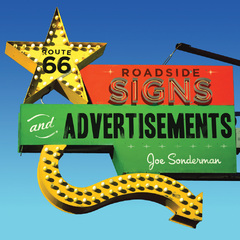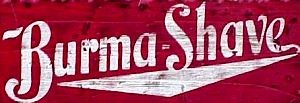 This year I’ve come across five travel-related books I’d like to highlight.
This year I’ve come across five travel-related books I’d like to highlight.
I think any or all of them would make great gifts for the baby boomer traveler on your list — or anyone else who enjoys a dose of history and adventure with their travels or making new discoveries on the back roads of America.
All are from the Minneapolis-based Quarto Publishing Group USA, under the imprints Voyageur Press and Zenith Press.
I’ll feature all the books in this and upcoming posts.
The first, Route 66 Roadside Signs and Advertisements, is written by Joe Sonderman, with photography by Sonderman and Jim Hinckley. It was issued by Voyageur Press in 2016.
If you remember traveling on Route 66 — or even just getting your kicks by watching the early 1960’s Route 66 TV show starring Martin Milner — you will love this book. It’s guaranteed to make you nostalgic for the pre-Interstate road trips of the 1950’s — even if you’re too young to have actually experienced it.
As Sonderman writes, “The story of Route 66 has always been about someone heading west,” and I remember the magic of riding in the car at age 10 on summer vacation with my family, as we headed west from Indiana to California — much of it along fabled Route 66.
Northern Illinois to Southern California
Route 66 ran 1139 miles from Chicago to Los Angeles, passing through Illinois, Missouri, Kansas, Oklahoma, Texas, New Mexico, Arizona, and California until reaching the traditional “End of the Road,” the Pacific Ocean.at the Santa Monica Pier. Landscapes ranged from fertile fields to prairie to cattle country to deserts and finally to sandy beaches.
The going was much slower then but far more engrossing: miles of empty highway, to be sure, but ever punctuated by a variety of eye-catching diversions: small one-horse towns, gas stations that gave out S&H Green Stamps with your 21.99 cents a gallon purchase, “Chew Mail Pouch Tobacco” signs painted on barn walls.
And, always, glowing neon signs pointing the way to motels, cabins, motor courts, cafes, diners, drive-ins, curio shops, and a curious collection of often funky roadside attractions.
Sonderman uses dozens of color photographs of these signs and advertisements — both vintage and modern — as the thread to weave the story of Route 66, from its inception in the 1920’s to its heyday as an iconic highway in the mid-20th century (known then as the “Main Street of America” and the “Mother Road”) to its eventual demise as the lure of speedier Interstates overtook it in the 1960’s and beyond. Today, while stretches of the road still exist, Route 66 survives more in the imagination than in pavement.
Jackrabbits and Burma-Shave
Along with Route 66 history, Sonderman includes a number of mini-features on “Rest Stops” along the route, such as Missouri’s Meramec Caverns, Phillips 66 gas stations, and Tucumcari, New Mexico’s, Blue Swallow Motel, which he calls the most famous motel along Route 66.
My favorite “Rest Stops” are Sonderman’s features on Burma-Shave signs and the mysterious jackrabbit signs that were meant to intrigue drivers enough to stop at an unidentified destination hundreds of miles ahead. They had the desired effect.
The jackrabbit signs, posted along Route 66 as far back as Springfield, Missouri, featured only black jackrabbit silhouettes and the mileage to whatever it was they were advertising, which turned out to be a men’s store in Winslow, Arizona. When you finally reached the store, it was a huge relief to read “Here It Is” — even though the “trading post” itself was something of a disappointment. They did have cold cherry cider, though, and the signs propelled their business into the stratosphere.
Burma-Shave signs consisted of simple five-line ditties, which offered haiku-like, often humorous advice on rules of the road and other matters, both weighty and frivolous. The author quotes a number of them that ring a bell from those days, such as:
Don’t stick
Your elbow
Out so far
It might go home
In another car
Burma-Shave
Burma-Shave signs were eventually removed from the roadsides in the early 1960s, and a little bit of Americana was lost with them. A few remaining signs reside in the Smithsonian in Washington, DC, and the Henry Ford Museum in Michigan.
You can read much more about Burma-Shave and jackrabbit signs, as well as the classic destinations and sights along Route 66 in Sonderson’s book. Go here to order from the Quarto Publishing Group, which is now featuring a sale. Regularly $19.99, and well worth it.
Next Up: Backroads of Arizona and Backroads of Florida.
Note to Readers: Do you have reminiscences of traveling on Route 66? If so, I’d love to hear from you.












2 Responses to Get Your Kicks With This Route 66 Book